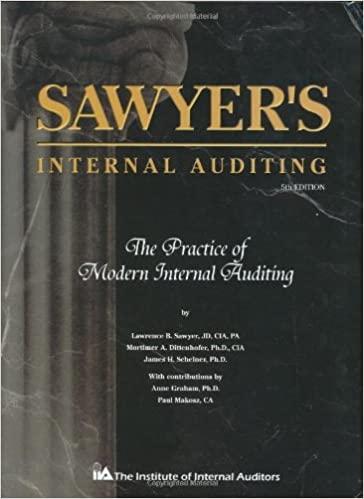Question
PROBLEM II: Midway Construction was a partnership owned by Davis, Murray, and Clay with year-end 2013 capital balances of $50,000, 80,000, and $70,000, respectively. Davis
PROBLEM II:
Midway Construction was a partnership owned by Davis, Murray, and Clay with year-end 2013 capital balances of $50,000, 80,000, and $70,000, respectively. Davis and Murray each received an annual salary of $100,000. Clay was primarily involved in sales and received a salary of $70,000 and a bonus of 20% of net income after salaries. All remaining prots were allocated equally among the partners. In the event of insufcient income or operating losses, each provision of the agreement would be satised to whatever extent possible given the order of salaries, interest, bonus, and percentages. Salaries are distributed at the end of each calendar quarter, and Clays bonus is distributed at the end of the rst month subsequent to year-end. Eighty percent of all other allocated income (income other than salary and bonus) is distributed to the partners at the end of the rst quarter subsequent to year-end. During 2013, the partnership had net income of $450,000 and proceeded to construct a number of spec homes during 2014.
Unfortunately, during 2014, interest rates increased, and the economy experienced a signicant slowdown, resulting in partnership income of only $300,000. In order to improve cash ows, on January 1, 2015, Rayburn made a capital contribution to the partnership of $59,000 cash and received a 50% interest in capital. Rayburn would receive a prot allocation equal to interest of $5,900 in 2015 and a 10% prot percentage. In 2016, Rayburn would receive interest of 10% on average capital, before allocation of 2016 prots, and a 10% prot allocation. The previous partners prot and loss agreement was modied to provide for salaries at one-half of previous levels, none of which were to be distributed, and prot percentages of 30% each. All other aspects of the previous prot-sharing agreement remained in effect. During the year 2015, conditions worsened, and the partnership reported income of $142,000. At year-end 2015, Davis sold its capital interest to the partnership in exchange for $49,400 and received no further distributions. At the beginning of 2016, Murray loaned the partnership $50,000 with the necessary loan documents providing for interest at the rate of 6%. The prot-sharing agreement for 2013 was completely changed to simply provide for interest on capital to Rayburn as previously set forth and all remaining prots to be allocated 40%, 40%, and 20% for Murray Clay, and Rayburn, respectively. The only withdrawal to take place during 2016 was the distribution of Clays 2015 bonus.
The partnership could no longer sustain the economic downturn, and the decision was made to liquidate the partnership after having reported net income of $110,000 during the rst six months of 2016. At the beginning of the liquidation process, the partnership had $15,000 in cash and liabilities, excluding loans from partners, of $84,000. Noncash assets of the partnership were liquidated as follows:
1. On August 1, 2016, assets with a book value of $220,000 were sold for $180,000.
2. On September 1, 2016, assets with a book value of $70,000 were sold for $82,000.
Prior to any further liquidation of assets, all available cash other than $10,000 held for future expenses was to be distributed to the partners on September 15, 2016.
REQUIRED:
1. Prepare a schedule analyzing the partners capital prior to liquidation of the partnership. Assume use of the bonus method to record all changes in the ownership structure of the partnership.
2. Prepare a schedule of cash payments on September 15, 2016, of the liquidation, showing how the available cash was distributed.
Step by Step Solution
There are 3 Steps involved in it
Step: 1
To address the problem we need to proceed systematically and break it down into clear steps Well tackle each requirement separately Step 1 Analyze Par...
Get Instant Access to Expert-Tailored Solutions
See step-by-step solutions with expert insights and AI powered tools for academic success
Step: 2

Step: 3

Ace Your Homework with AI
Get the answers you need in no time with our AI-driven, step-by-step assistance
Get Started


